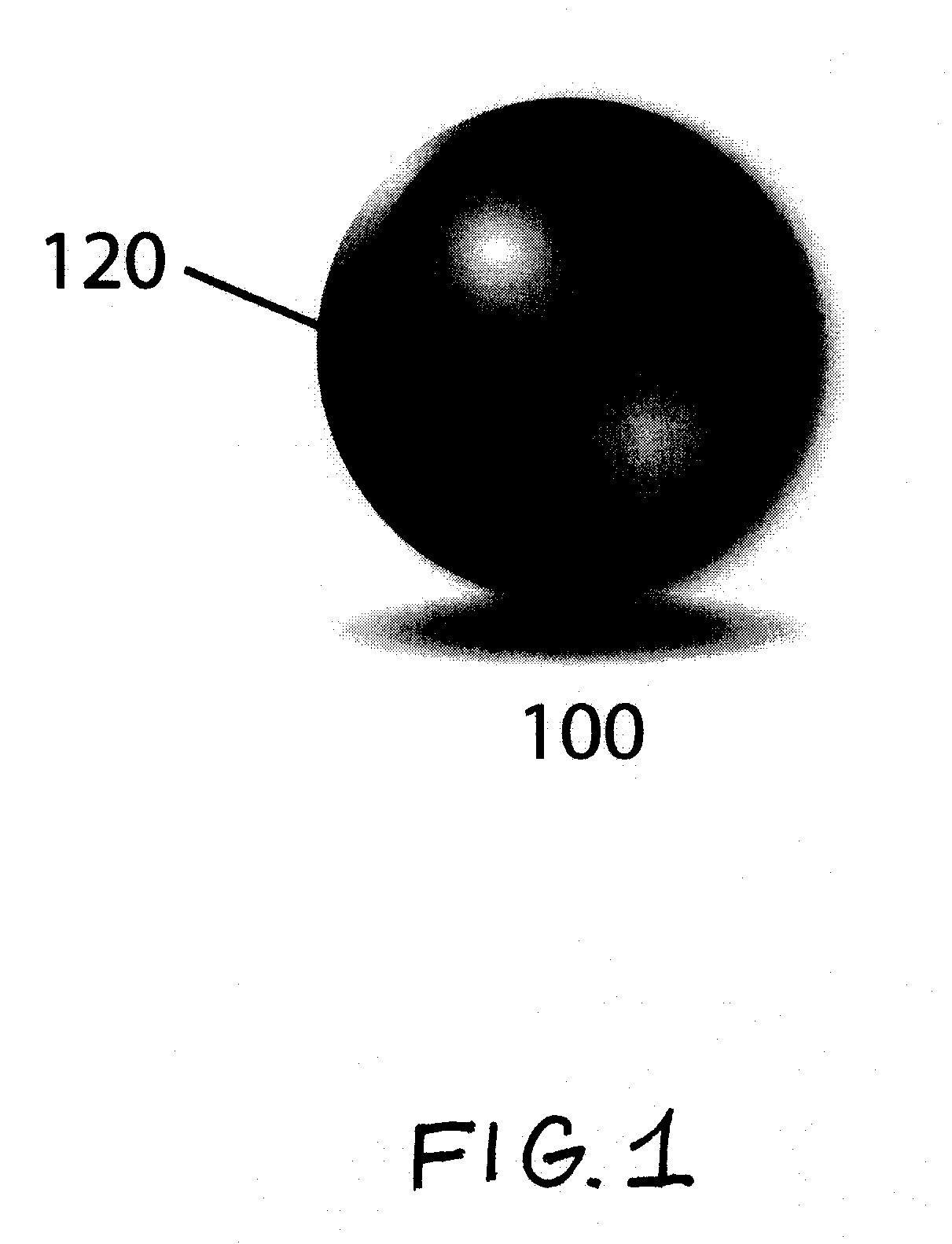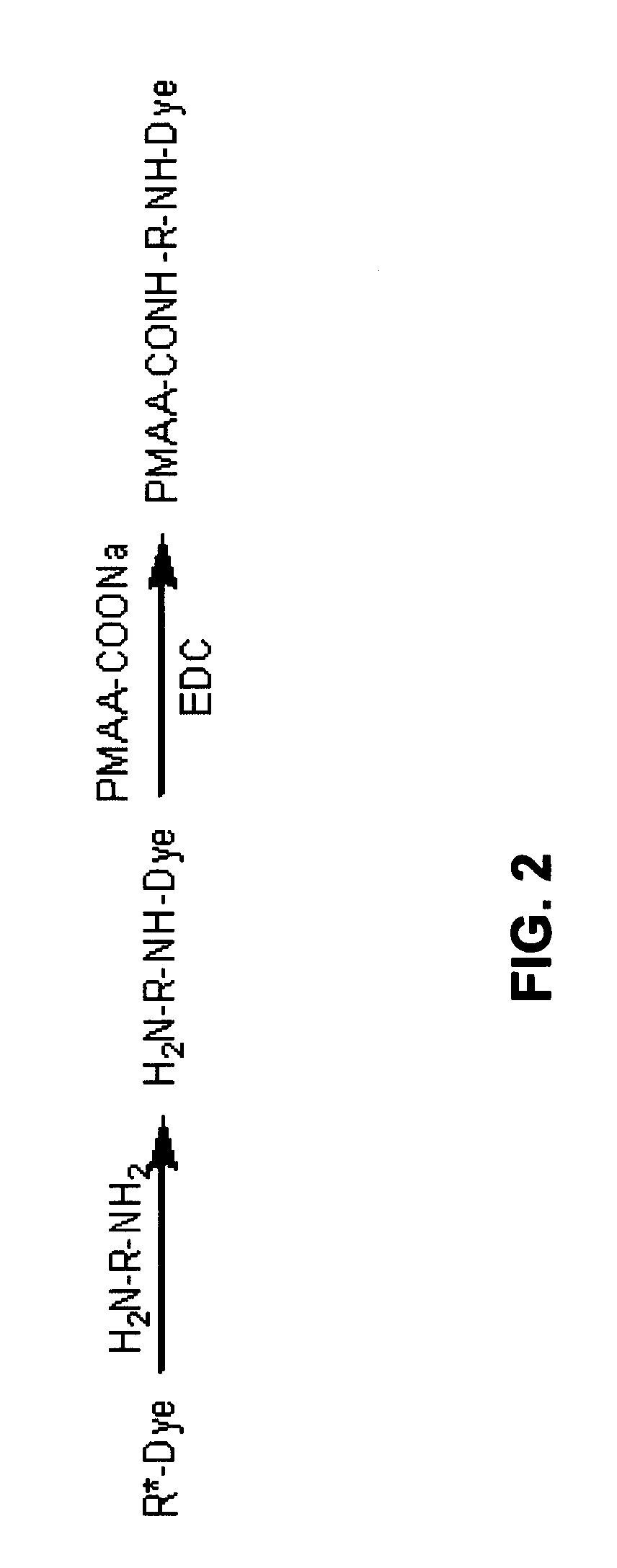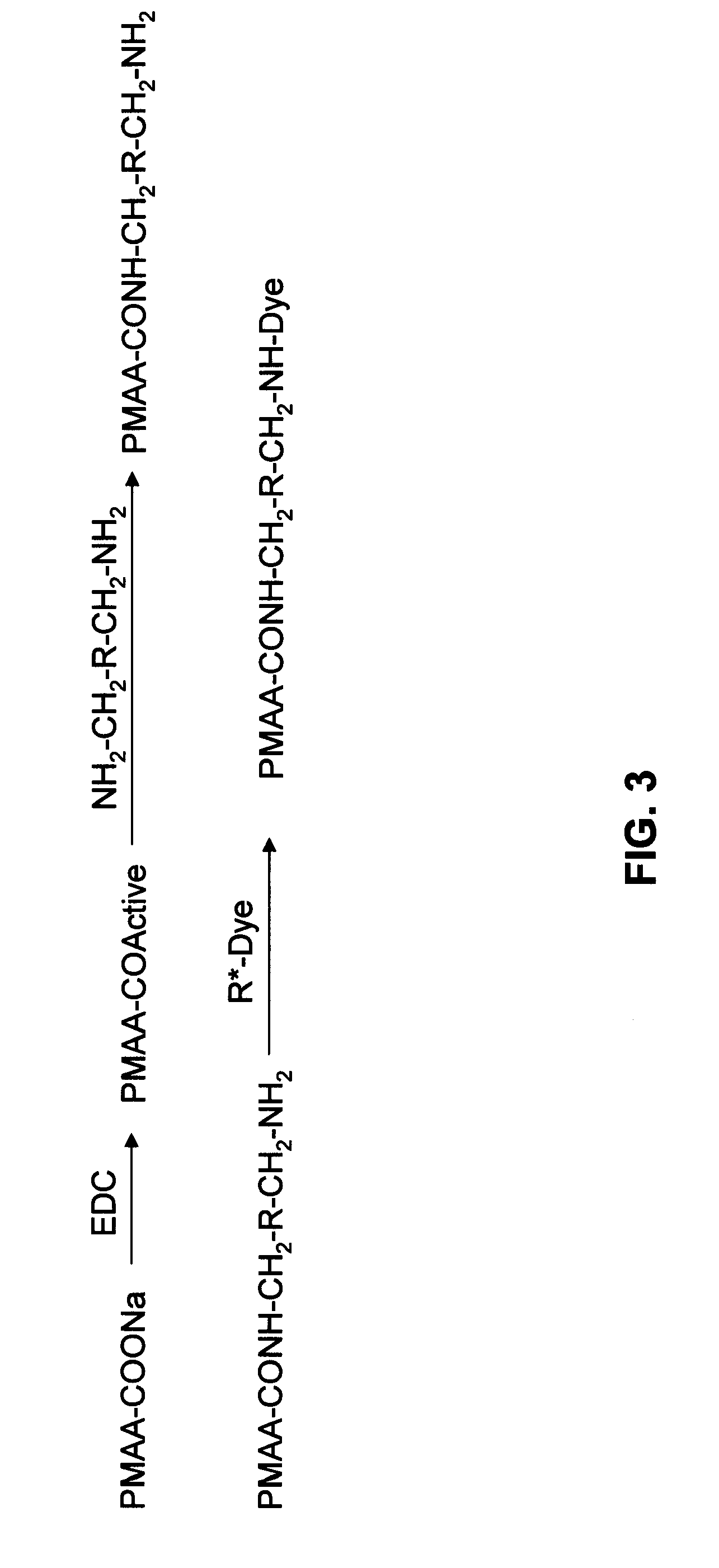Color-Coded Polymeric Particles of Predetermined Size for Therapeutic and/or Diagnostic Applications and Related Methods
a technology of color-coded polymeric particles and diagnostic applications, applied in the field of polymeric particles, can solve the problems of increasing the overall risk associated with performing a given treatment, and achieve the effect of reducing the probability of user-introduced or procedural errors
- Summary
- Abstract
- Description
- Claims
- Application Information
AI Technical Summary
Benefits of technology
Problems solved by technology
Method used
Image
Examples
example 1
Physical Incorporation of Indigo Dyes as Precipitates
[0092]Indigo dye can be incorporated into acrylate-based microparticles as follows. The vat can be prepared by mixing 5 g Indigo, 2.5 ml ethanol, 150 ml hot water, 6.5 ml concentrated sodium hydroxide solution and 7.5 g sodium dithionite. The mixture can be stirred for 15 minutes at 50-60° C. until the mixture converts to yellow-greenish. The concentrated solution can be given into 3 L of hot (50-60° C.) water with 3 ml of ammonia (25% solution) and additional 2 g of sodium dithionite. The amount of water can be varied from 0 to 31 to receive different color intensity. After stirring of the solution becomes yellow-greenish the particles can be added, and gently stirred for additional 15 minutes. After decanting and rinsing of the particles with water they become blue. Alternatively, Indigo red can be incorporated following the same protocol.
example 2
Physical Incorporation of Dyes Containing Sulfonic Acid Side Groups as Precipitates
[0093]Dyes containing sulfonic acid side groups can be incorporated into acrylate-based microparticles as follows. Dyes containing sulfonic acid side groups have a high capacity in precipitating with barium ions to form a water insoluble compound. For example, 3 ml Reactive Blue 21 (20 mg / ml physiological saline) can be added to 3 ml hydrated polymethylacrylate beads (400-600 μm) in physiological saline (total volume 6 ml). The suspension can be gently shaken for 10 to 15 min to reach diffusion equilibrium. Afterwards, the aqueous phase can be removed. 5 ml 0.5 molar aqueous barium chloride can be added to the particles and shaken over 30 min at ambient temperature. The suspension was stored over night at 70° C., than extensively washed with physiological saline until the solution remained optically colorless. The solution can be substituted by 0.5 molar barium chloride and heated for 30 min to approx...
example 3
Physical Incorporation of Dyes Containing Sulfonic Acid Side Groups as Precipitates
[0094]Dyes containing sulfonic acid side groups can be incorporated into acrylate-based microparticles as follows. Reactive Blue, Reactive Blue 4, Reactive Blue 19, Reactive Blue 163, Reactive Black 5, Reactive Yellow 86, Reactive Yellow 15, Reactive Orange 78, Reactive Red 11, Reactive Red 180, Chinolin Yellow, Allura Red AC, and any combinations thereof can be used to obtain different color shades by using mixtures of various ratios / percentage. Color intensities can be altered by varying the total dye amount (1 mg to 400 mg).
PUM
| Property | Measurement | Unit |
|---|---|---|
| diameter | aaaaa | aaaaa |
| diameter size | aaaaa | aaaaa |
| diameter size | aaaaa | aaaaa |
Abstract
Description
Claims
Application Information
 Login to View More
Login to View More - R&D
- Intellectual Property
- Life Sciences
- Materials
- Tech Scout
- Unparalleled Data Quality
- Higher Quality Content
- 60% Fewer Hallucinations
Browse by: Latest US Patents, China's latest patents, Technical Efficacy Thesaurus, Application Domain, Technology Topic, Popular Technical Reports.
© 2025 PatSnap. All rights reserved.Legal|Privacy policy|Modern Slavery Act Transparency Statement|Sitemap|About US| Contact US: help@patsnap.com



